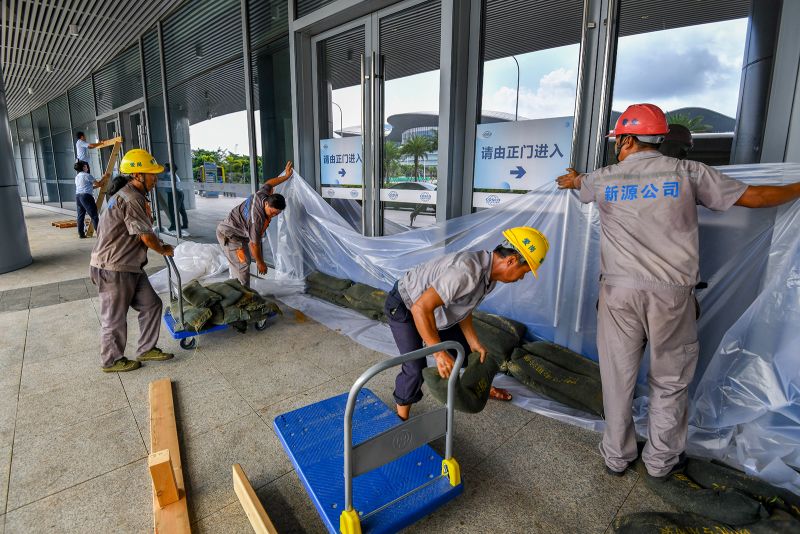
Super Typhoon Yagi: The Menacing Power Threatening ‘China’s Hawaii’
The meteorological surveillance for eastern Asia has been gripped recently by a palpable sense of apprehension as typhoon Yagi strengthened into a super typhoon, bringing potential distress to Sanya City, often referred to as ‘China’s Hawaii’ due to its tropical climate and scenic beaches. This article discusses the severity of this development, its potential impacts, and the necessary preparatory steps being taken to mitigate the imminent threat.
At the heart of the matter is typhoon Yagi’s sudden intensification into a super typhoon. Super typhoons are classified as having sustained wind speeds of over 240 km/h, often accompanied by intense, torrential rain. The sheer magnitude of these natural phenomena makes them incredibly destructive, with the capacity to disrupt lives and economies, particularly for regions located along the coastlines.
In this case, Yagi has its gaze set on China’s archipelago province of Hainan, specifically the city of Sanya. Famed for its stunning sand beaches and vibrant turquoise waters, Sanya earns its moniker as ‘China’s Hawaii’ rightfully. As much as it’s a magnet for tourists and weekenders, this coastal city now stands as the frontline against the natural fury of super typhoon Yagi’s imminent landfall, potentially dealing a significant blow to the province’s socio-economic fabric.
However, it’s not all bleak as the impending super typhoon has been met by the Chinese government’s displays of efficient reaction and readiness. Institutional bodies like the China Meteorological Administration (CMA) have already issued the highest-level warnings about typhoon Yagi’s potential landfall, urging citizens to stay informed about the typhoon’s trajectory and take necessary precautions.
The preemptive measures to brace Sanya and its adjacent regions against Yagi also involve meticulous evacuation protocols. Citizens are advised to prepare ahead by securing loose objects, reinforcing their homes, and stocking up on emergency supplies. The government, on its part, has been initiating large-scale evacuation processes, especially for the vulnerable coastal regions that could bear the brunt of Yagi’s turbulent wrath.
Furthermore, the strategic deployment of rescue teams and the provision of essential services ensure that post-disaster recovery is streamlined. Despite the destructive potential of Yagi, China’s historic resilience and responsive disaster management approach offer some solace.
Amidst this turmoil, it’s also important to contemplate the aftermath of Yagi’s landfall on the environmental sustainability of ‘China’s Hawaii’. Coastal cities like Sanya are crucial ecological components supporting diverse marine life and coral reefs. The super typhoon could potentially devastate these marine ecosystems and disturb their fragile balance. Therefore, conservation efforts and ecological restoration will necessarily follow in Yagi’s wake.
Despite the gloomy prospects, it is crucial to note that Yagi’s ultimate path isn’t absolute. Typhoon trajectories can change rapidly, and there’s always room for deviations. As the super typhoon Yagi continues to loom off the coast, the city of Sanya, the resilience of its residents, and the might of China’s disaster management strategies have been put to a rigorous test. The real mettle of ‘China’s Hawaii’ will now be seen in harnessing this typhoon’s wrath and emerging stronger and more resilient in its aftermath.
